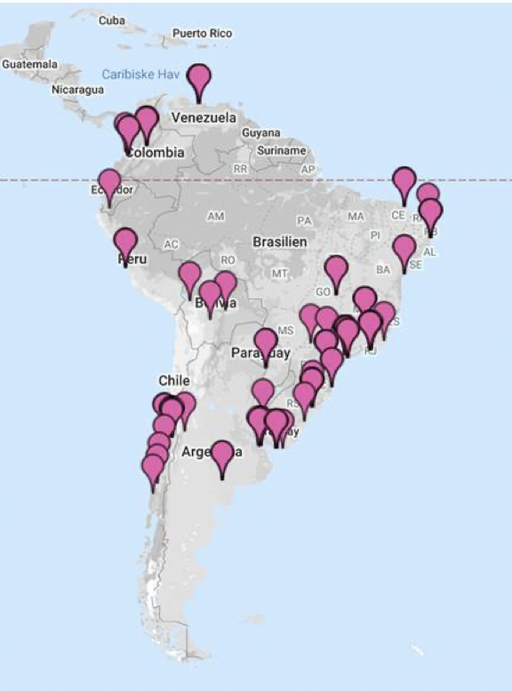Mobility

Introduction
Historically, literature—especially the novel—has been international. Its vagrant protagonists have roamed the world and crossed political, linguistic, and cultural borders, and genres have developed forms and poetics with a high international currency: the classical epic, the sonnet, the picaro novel, the historical drama, the elegy, the novel of ideas, the historical novel, the migration novel, and so on. Gradually, but also through periods of acceleration, literature has reflected a globalized world in which mobility has come to play an increasingly important role. Whether forced or voluntary, characters crossing territorial and anthropological borders have come to dominate literature. The lives of those characters who stay put, for such characters of course still exist, are inevitably affected by the intense dynamism characterizing societies in general.
With amplified movement and transnationalism come counter-reactions of inertia and nationalism. Literature reflects both tendencies. On a medialized planet, literary forms travel more easily across languages, cultures, and nations. The style of hip hop or rap music, with its characteristic prosody, has spread across the globe, influencing literature far from its geographic and cultural origins; many works of literature employ strategies of multilingualism in their attempt to convincingly represent a heteroglossic world, and the nation is challenged as the automatic starting point for literary historiography and literary educational programs in high schools and universities.
Applications
Elementary
Mobility is not easy to formalise, but you can start with some of the low-hanging fruit and count uses of place names and search for patterns of their appearances throughout a literary work. An author’s use of place names, toponyms, can be a useful tool for the textualization of space as well as the depiction of how characters move within or across a textual space.
You can find inspiration in the way Gjesdal (2019) investigated how the use of place names is of great importance in Abdellah Taïa’s novel Une mélancholie arabe (2008) which is a text representing mobility between the West and the Arab world in the contexts of migration as well as professional travel. As highlighted by Gjesdal, although narratives of exile and migration may differ vastly in the nature of the journeys undertaken, they share the common feature of being related to the spatial movements between home and place of arrival. Another approach can therefore be to track routes of characters within a literary work or corpera and visualise it using an online map such as Google Maps.
Additionally, a wide variety of language can often be seen in literary works of migrant literature reflecting both the influence of multilingualism as well as references that might have to do with mobility. Counting languages in use could therefore be another simple yet interesting approach to mobility.
Lastly, The Group for Experimental Methods in Humanistic Research at Columbia University has made a webpage containing a list of projects that you can explore and get inspired by.
Advanced
Distant reading, i.e. computationally going through big corpora instead of close-reading a particular text, can make visible patterns of travel destinations across time. Belgum et al. (2018) addressed this question to explore geographical trends and prominent themes in British travel literature in the 19th century. Compare the spatial distribution of places in different periods of time in their application Mapping Travel Writing. What does it tell about trends in mobility or other world events?
Computational methods also allow for exploring one location more in detail. For instance, in Stanford Literary Pamphlet 13, and in Evans and Wilkens’ work on British fiction, literary London is explored through time and through different corpora. Carry out your investigation on another city often represented in the literature. Collect passages about it, for example selecting novels from Project Gutenberg, and apply methods presented in the articles to explore the development of the literary city and its representation over time. You can also make a vocabulary list related to mobility (see Bologna’s article for an example of how it is done for urban space) to measure the occurrence and characteristics of mobility.
Mobility can also be understood in terms of books travelling over the world. One measure to investigate that is to look at how many languages literary works are translated into. Gather a list of bestseller books, for instance using the bestsellers listed by New York Times per year and map them by the country or city of origin of the author. What does this reveal about the book scene in the U.S.? Index Translationum, UNESCO's database of book translations is a valuable resource for understanding the volume and routes of translation. The site can also be used to study the mobility of literature by investigating into which languages works get translated. How international is our literary reality?
Resources
Scripts and sites
-
A list of projects of the Embodied Space Lab, combining mapping and reading.
-
Geomapping tutorials in Programming Historian.
-
Mapping Travel Writing, an interactive map of nineteenth-century travel writing.
- Textual Geographies, an interactive visualisation of locations extracted from literature.
Articles
-
Belgum, K., Handley, K., & Bott, R. (2018). Mapping travel writing: a digital humanities project to visualise change in nineteenth-century published travel texts. Studies in Travel Writing, 22(3), 306-324. https://doi.org/10.1080/13645145.2019.1575765
-
Evans, E., & Wilkens, M. (2018). Nation, Ethnicity, and the Geography of British Fiction, 1880-1940. https://doi.org/10.22148/16.024
-
Gjesdal, A. (2019). Travelling toponymy: The contribution of place names to the textual representation of place and memory in Abdellah Taïa’s Une mélancolie Arabe. Borderlands, 18 (1). (pp. 111-132). Doi: 10.21307/borderlands-2019-006. https://www.exeley.com/borderlands/doi/10.21307/borderlands-2019-006
-
Heuser, R., Moretti, F., & Steiner, E. (2013) The Emotions of London. Stanford Literary Lab Pamphlet 13. https://litlab.stanford.edu/LiteraryLabPamphlet13.pdf
- Nyman, J. (2009, January 1). Home, Identity, and Mobility in Contemporary Diasporic Fiction. Brill. https://brill.com/view/title/31010